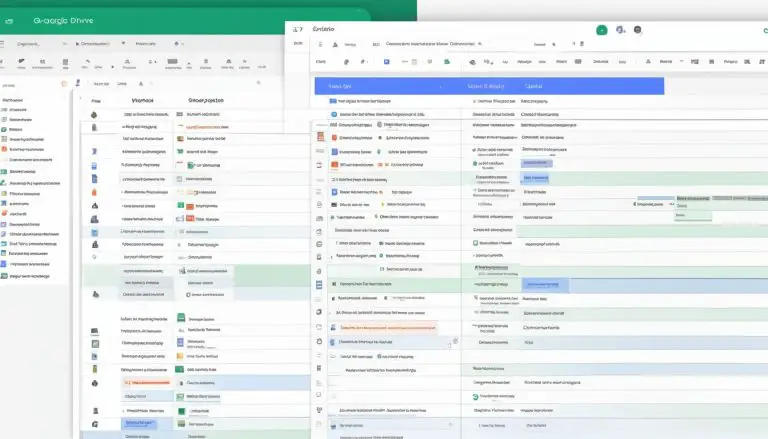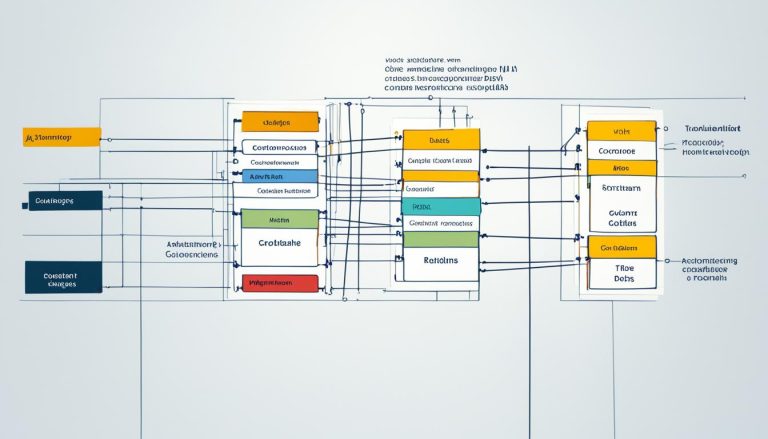Understanding FastCGI: A Speedy Server Protocol
FastCGI is a fast, open, and secure web server interface that solves the performance problems inherent in CGI (Common Gateway Interface). Developed by Open Market, Inc., FastCGI is designed to address the limitations of CGI in delivering dynamic content efficiently. It offers benefits such as faster performance, simplicity, language independence, process isolation, open standard, and architecture independence. FastCGI is supported in various server products, including those from Open Market, Microsoft, and Netscape.
Key Takeaways:
- FastCGI is a speedy web server interface that surpasses the limitations of CGI.
- It offers faster performance, simplicity, language independence, and process isolation.
- FastCGI is an open standard, supported by various server products.
- It improves web performance without the complexity of proprietary APIs.
- FastCGI is the recommended choice for optimizing server communication and improving web performance.
What is CGI and Its Limitations
The Common Gateway Interface (CGI) is the de facto standard interface for Web server applications. It allows applications to generate responses that are returned to the client. CGI offers simplicity, language independence, process isolation, open standard, and architecture independence.
“CGI offers simplicity, language independence, process isolation, open standard, and architecture independence.”
However, CGI has significant drawbacks that can impact its performance and functionality:
- Poor Performance: CGI creates a new process for each request, leading to slow performance and increased server load.
- Limited Functionality: CGI only supports a simple “responder” role, which can limit the complexity and functionality of web applications.
- Inability to Link Multiple Stages: CGI programs lack the ability to link into other stages of the web server request processing, reducing their integration capabilities.
- Lack of Process Isolation: CGI programs do not provide process isolation, making them less secure and susceptible to interference from other processes.
- Tied to Specific Server Architectures: CGI programs are often tied to specific server architectures, limiting their portability and compatibility.
Comparison Table: CGI Drawbacks
| Drawbacks | Description |
|---|---|
| Poor Performance | Create a new process for each request |
| Limited Functionality | Supports only a simple “responder” role |
| Inability to Link Multiple Stages | Lacks integration capabilities |
| Lack of Process Isolation | Less secure and susceptible to interference |
| Tied to Specific Server Architectures | Limiting portability and compatibility |
Despite its drawbacks, CGI remains widely used due to its simplicity and compatibility with various web servers and programming languages. However, alternatives like FastCGI have emerged to address the limitations of CGI and provide enhanced performance and functionality.
FastCGI vs Server APIs
In response to the performance limitations of CGI, several vendors have developed server APIs to enhance web server performance. Notable examples include NSAPI (Netscape Server Application Programming Interface) from Netscape, ISAPI (Internet Server Application Programming Interface) from Microsoft, and Apache API (Application Programming Interface) for the Apache web server.
These server APIs offer faster performance compared to CGI by running applications within the server process and providing additional functionality such as access control and logging.
However, it’s important to consider the drawbacks associated with server APIs. They introduce complexity and language dependence, as developers need to understand specific API implementations and follow proprietary coding practices. Server APIs also lack the process isolation offered by FastCGI, meaning that issues in one application can potentially affect the stability and performance of the entire server process. Moreover, server APIs are often tied to a specific web server architecture, limiting portability.
On the other hand, FastCGI combines the benefits of both CGI and server APIs, offering improved performance, simplicity, language independence, process isolation, non-proprietary coding, and architecture independence.
Here’s a breakdown of the key differences between FastCGI and server APIs:
FastCGI
- Offers improved performance by utilizing persistent processes and avoiding the overhead of starting a new process for each request
- Provides simplicity and language independence, making it compatible with a wide range of programming languages
- Ensures process isolation, enhancing the stability and security of the server environment
- Uses non-proprietary coding standards, giving developers more flexibility
- Supports multiple web server architectures, allowing for portability across different platforms
Server APIs
- Deliver faster performance compared to CGI by running applications within the server process
- Provide additional functionality such as access control and logging
- Introduce complexity and language dependence
- Lack process isolation, making the server vulnerable to issues in individual applications
- Require proprietary coding practices and are tied to specific server architectures
In conclusion, FastCGI offers a balanced solution that combines the performance advantages of server APIs with the simplicity, language independence, and process isolation of CGI. Its non-proprietary coding standards and architecture independence make it a versatile choice for optimizing server communication and improving web performance.

FastCGI Proxying in Nginx
Nginx, a powerful web server solution, provides built-in support for FastCGI proxying. This feature enables efficient communication with application servers that don’t directly handle client requests. FastCGI is commonly used for PHP processing in Nginx environments.
To configure FastCGI proxying in Nginx, you can utilize the “fastcgi_pass” directive. This directive specifies the server to which requests should be proxied using the FastCGI protocol. Further configuration is necessary to pass relevant information to the backend server, such as HTTP headers. This can be achieved by using parameters set with the “fastcgi_param” directive.
Nginx with FastCGI is compatible with applications written in various programming languages, as long as the application includes a component configured to respond to FastCGI requests. This flexibility allows developers to leverage the power of FastCGI for efficient PHP processing and other server-side operations.
Conclusion
FastCGI offers significant performance advantages compared to CGI and server APIs. With its fast and efficient web server interface, FastCGI solves the performance problems typically associated with CGI, but without the complexity and limitations of server APIs. One of the key benefits of FastCGI is the ability to use persistent processes, which enables the reuse of resources for multiple requests and efficient in-memory caching.
Another advantage of FastCGI is its language independence, allowing developers to use their preferred programming language without any restrictions. Additionally, FastCGI supports process isolation, ensuring the stability and security of web applications. It is also a non-proprietary solution that can run on any server architecture, making it highly versatile and adaptable.
FastCGI’s benefits, including faster performance, simplicity, and scalability, make it the go-to choice for most web applications. Its optimized server communication and improved web performance contribute to a seamless user experience. Whether you need to handle high traffic volumes or enhance the responsiveness of your website, FastCGI offers the tools and flexibility you need to achieve outstanding results.
FAQ
What is FastCGI?
FastCGI is a fast, open, and secure Web server interface that improves the performance of CGI (Common Gateway Interface) by addressing its limitations. It is designed to deliver dynamic content efficiently without introducing the complexity of proprietary APIs.
What are the limitations of CGI?
CGI has significant drawbacks, including poor performance, limited functionality, lack of process isolation, and tie-in to specific server architectures. It also lacks the ability to link into other stages of Web server request processing.
How does FastCGI compare to server APIs?
Unlike server APIs such as NSAPI, ISAPI, and Apache API, FastCGI offers simplicity, language independence, process isolation, non-proprietary coding, and architecture independence. It combines the best aspects of CGI and server APIs to provide improved performance without the drawbacks.
Can FastCGI be used with Nginx?
Yes, Nginx supports FastCGI proxying, allowing for efficient communication with application servers. FastCGI is commonly used for PHP processing in Nginx. Configuration involves specifying the server to proxy requests to using the FastCGI protocol and passing necessary information with the “fastcgi_param” directive.
What are the benefits of FastCGI?
FastCGI offers significant performance advantages, including faster response times and efficient in-memory caching. It is language-independent, supports process isolation, is non-proprietary, and can run on any server architecture. These benefits make FastCGI a top choice for improving web performance.
Source Links
- https://fastcgi-archives.github.io/FastCGI_A_High-Performance_Web_Server_Interface_FastCGI.html
- https://fastcgi-archives.github.io/Understanding_FastCGI_Application_Performance_FastCGI.html
- About the Author
- Latest Posts
Mark is a senior content editor at Text-Center.com and has more than 20 years of experience with linux and windows operating systems. He also writes for Biteno.com






